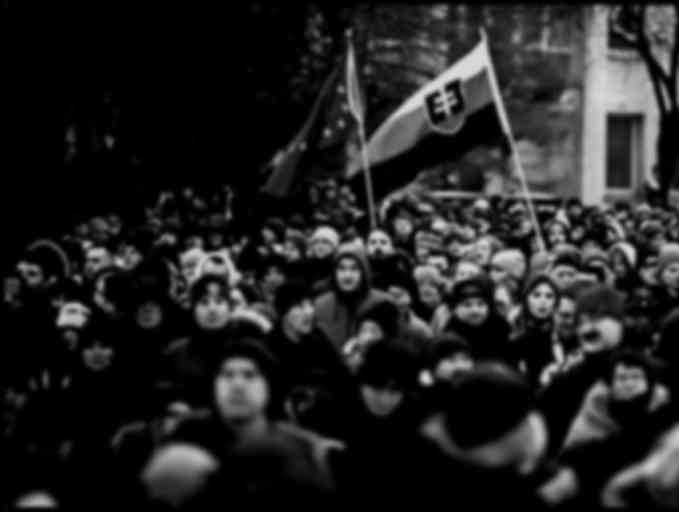Ukrainians and Russians are Learning. What About Us? #civil defense#civil-military cooperation#cyber warfare tools#ethics of autonomous weapons#fifth generation warfare#information warfare#innovations in military technologies#lessons from the war in Ukraine#military communication#military tactics drones#modern warfare
„It is not the strongest of the species that survives, nor the most intelligent, but the one that is most adaptable to change.“ – a paraphrase of Charles Darwin’s evolutionary theory. It’s not enough to just understand the war in our neighborhood and recognize who is in the right. It’s important to learn from it and adapt.
#civil defense #civil-military cooperation #cyber warfare tools #ethics of autonomous weapons #fifth generation warfare #information warfare #innovations in military technologies #lessons from the war in Ukraine #military communication #military tactics drones #modern warfare
Note: Originally published at weekly .tyždeň. Illustrations by Pavel Macko, with support of AI moduls Flux Utra Pro and Copilot.
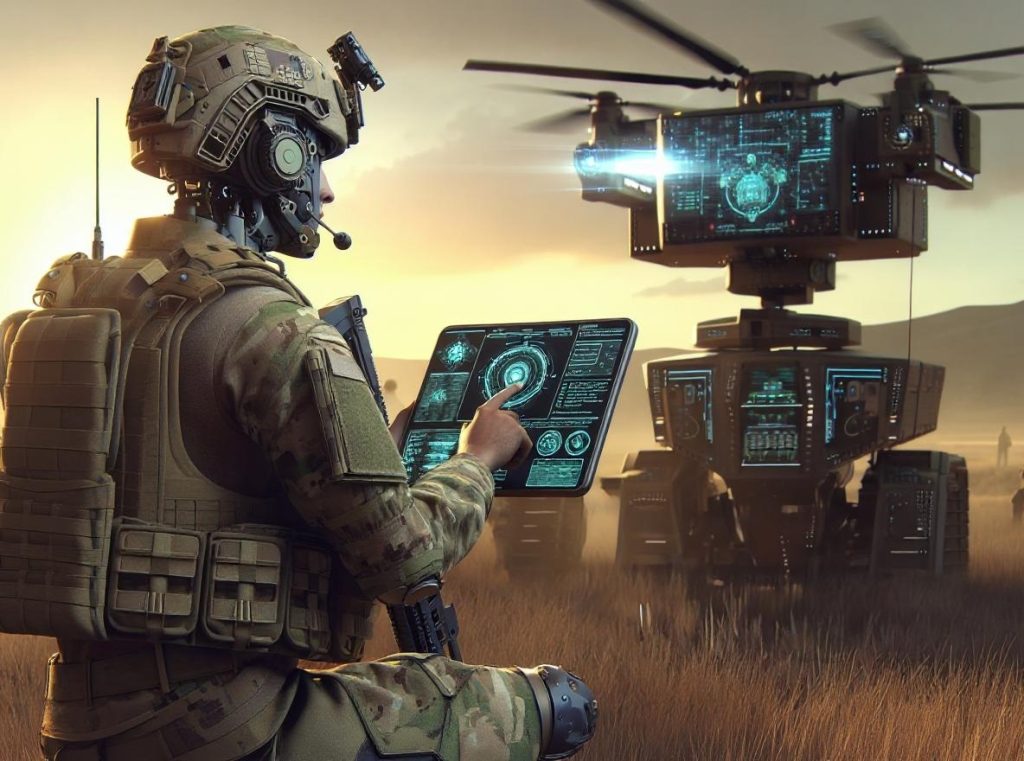
In Ukraine, we can observe in real-time how doctrines, tactics, and technology are changing. Some changes are the result of limited pre-war resources and losses during the exhausting war. The rest is innovation.
The West is helping Ukraine. But significant assistance is also coming to the huge and supposedly invincible Russia. According to the latest estimates, Russians have received more than 12 million 152mm artillery shells from North Korea. Russians are getting drones, weapons, and missiles from North Koreans and Iran, and industrial support from China.
A Battle of Will, Determination, and Innovation
The real struggle is taking place at the front and in the rear on both sides. From my visit to Kyiv as part of Globsec’s VIP group, I remember an image that characterizes this war. After a night attack, in the morning we met young CEO Tatiana at Brave 1. She had spent the night in a shelter with her children, took them to school in the morning, and came to work to welcome a group of guests – generals, MPs, diplomats, former intelligence chiefs, and an ex-president.
We found ourselves in an environment among people who looked like a group of hipsters and computer geeks. Brave1 was a newly established coordination agency. A cluster for defense innovations bringing together ministries, startups, and financiers to support the development of defense technologies. The organization is formed and managed by young women whose husbands are fighting at the front, and young men without mobilization obligations. Their mission is to ensure the modernization and development of new technologies for people on the zero line.

Do you have a good idea but don’t know how to implement it? Need money to produce a prototype? Want to test your product with soldiers? Go to Brave 1. The agency helps individuals, small companies, and technology giants. Brave 1 is far from being the only organization with such a mission. There are a whole range of arms and innovation associations operating there. The innovation cycle has shortened from decades to years and months. In the field of drones, generational change occurs every 3 to 6 months.
NATO has established the NATO-Ukraine Joint Analytical, Training and Education Center (JATEC). It wants to learn from Ukrainian insights on modern warfare. JATEC also coordinates the training of Ukrainian soldiers and analyzes new threats such as cyber warfare, drones, glide bombs, and AI technologies.
While Ukraine demonstrates enormous will and nationwide efforts for survival, we have the opportunity to observe in peace and safety how warfare is changing. Will we be able to analyze rapid changes? Can we not only identify lessons but also adopt them, learn them? Can we make the right strategic and investment decisions so that we don’t have to face aggression and learn everything only during defense like the Ukrainians?
Most Important: Defense is a National Matter
Even during Russian maneuvers before the invasion, it was clear that unequal opponents were facing each other. Ukraine was expected to hold out for a few days, at most weeks. But Ukrainian citizens overturned Putin’s chessboard with all its pieces. Russia hit hard. The main reason was that they weren’t just facing a less equipped but otherwise battle-experienced 200,000-strong army. They faced a nation that came together, had the determination to survive, and learned quickly.
From the first hours, not only the armed forces and central state bodies responded, but the entire country. Regional and local governments and territorial defense forces played a key role. Most governors and mayors knew what to do. They felt responsibility and had authority. Despite the advancing front, they organized local defense, ensured public services, and quickly removed the consequences of attacks.
Ukrainians quickly switched to total defense. The integration of civil-administrative components, rescue and security forces, territorial troops, and the regular army is unprecedented by our Western standards. There were also outages, but leaders knew what to do.
Despite Russian propaganda about a totalitarian regime, Ukraine is a democratic and decentralized country. Thanks to decentralization, independence, and initiative, they were able to quickly fill gaps. Including those in the logistical support of fighting troops. What centrally managed army logistics couldn’t provide was replaced by local civil-military cooperation and support.
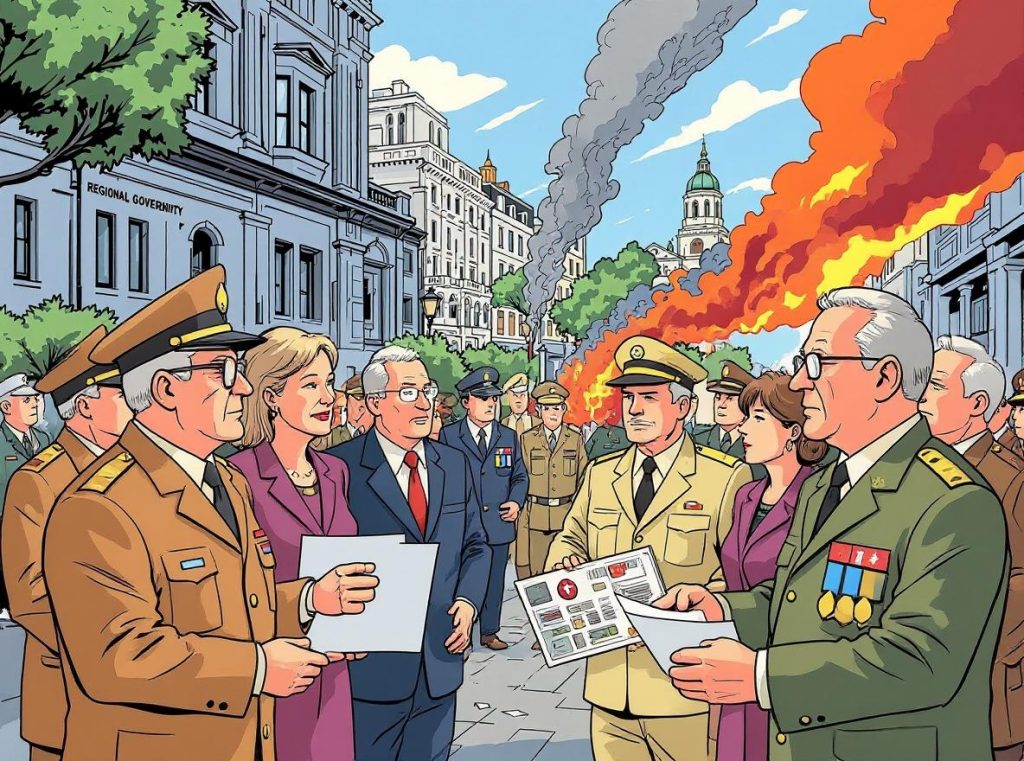
For a country’s survival in an exhausting war, overall resilience is important, the ability to quickly remove the consequences of attacks, quickly restore public services, functions of energy and critical transport infrastructure. This was one of the key factors why Russians failed to stop and destroy military aid deliveries from the West. Ukrainians could repair railways faster than Russians could destroy them.
Ukrainians mobilized the military and all other human and material resources. They could only do this because they had supplies and prepared people. According to Ukrainian experiences, we in NATO and Slovakia must reconsider the concept of mobilization, the system of state crisis management, and the preparation of professional components and the population.
If we want to deter aggressors and resist, we must quickly adopt a whole range of measures, implement them, and demonstrate our capabilities to deter an aggressor and successfully repel aggression if deterrence fails. Providing basic military training to large groups of the population must be part of the measures. The professional army cannot handle everything alone nor last long; we need robust reserves. Those that maximize the civilian capabilities of reservists.
The best preparation is regular simulations and exercises at the local and regional level. We need to:
▪️Strengthen the defense awareness of the population
▪️Improve knowledge of civil protection principles
▪️Build communities for homeland defense
▪️Ensure professional preparation and training of mayors and local governments

This will be useful not only in a major crisis but also in dealing with extraordinary events. Our civil protection and infrastructure are neglected. We must invest in infrastructure so that it allows us to withstand in case of attack and improves the quality of life and comfort in peace.
Smart People and Technologies
While the strong fighter from the arena is training somewhere in Záhorie together with the president and the minister of defense, the muscular Rambo is no longer the archetype of a soldier. We still need skilled, physically fit, and mentally resilient soldiers. But today we need more smart and educated soldiers, flexible engineers, and operators who can fully utilize new technologies that looked like sci-fi just ten years ago and are increasingly penetrating the military.
Artificial Intelligence (AI). It powers autonomous systems, predictive analysis, and real-time decision-making. It is used for target recognition, logistics optimization, and battlefield simulation. It enables faster threat assessment and adaptive combat strategies.
Autonomous and Unmanned Systems. These include drones, robotic ground vehicles, and unmanned vessels. They are used for surveillance, precision strikes, and supply deliveries in hostile zones. Swarming technology enables coordinated attacks by multiple drones.
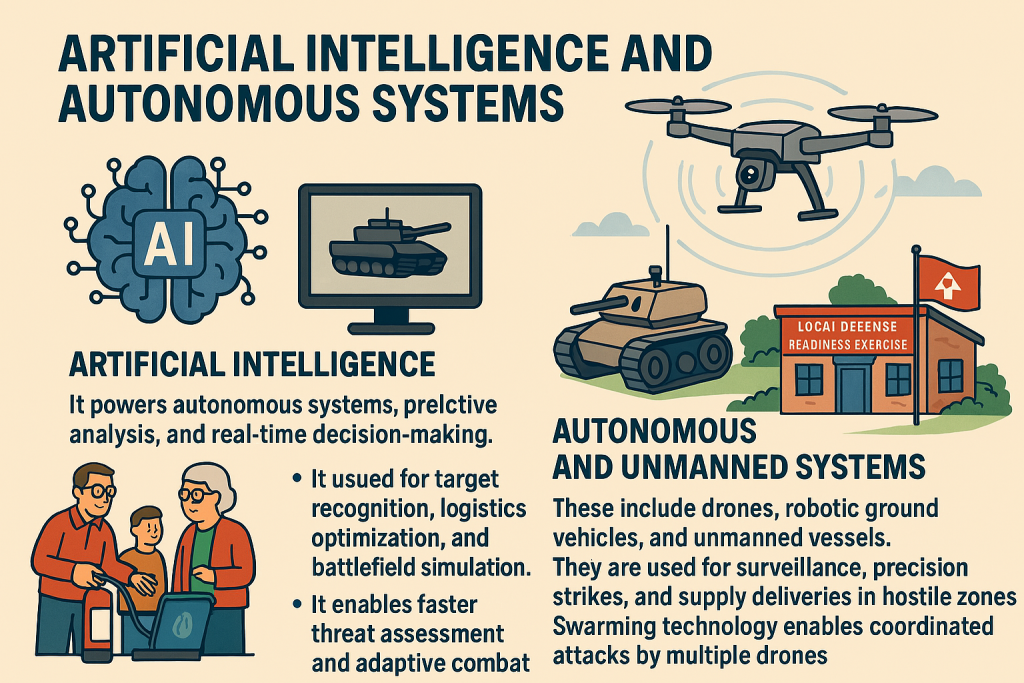
Cyber Warfare and Digital Defense focuses on enemy infrastructure, communication, and data systems. It includes disinformation campaigns and psychological operations. Countries are significantly investing in cyber resilience and offensive capabilities.
Quantum Technologies. Quantum encryption promises ultra-secure communication. Quantum sensors could revolutionize navigation and surveillance. They are still in the initial stage but are considered a strategic game-changer. Whoever masters them earlier will jump to a higher league.
Hypersonic Weapons. They reach over 5 Mach, making them extremely difficult to intercept. Russia’s Kinzhal missile has already been used in Ukraine, and hypersonic weapons have also been tested in combat by Iran. They force us to reconsider missile defense systems and deterrence strategies.
Space Capabilities. Satellites provide real-time intelligence, navigation, and communication. Space is becoming an arena for military superiority. Anti-satellite weapons and orbital surveillance are on the rise.
Advanced Manufacturing and Materials. 3D printing allows rapid production of parts and weapons in the field. New materials improve armor, „invisibility,“ and energy efficiency. They reduce logistical burden and increase battlefield adaptability.

Next-Generation Communications. 5G and secure networks enable faster and more reliable coordination. Stable and secure communication is crucial for operations across multiple domains, cyber security, and in space.
These technologies are changing the way wars are conducted and redefining what „war“ even means. On the other hand, technologies such as AI, autonomous weapons, and cyber warfare bring not only tactical advantages but also a number of ethical dilemmas. Among the most pressing dilemmas we can include:
▪️Addressable responsibility for decisions leading to death
▪️Human judgment vs. machine decisions
▪️Loss of moral will in autonomous systems
▪️Protection of civilians and collateral damage
▪️Permanent cyber warfare and information integrity
▪️Arms races due to a lower threshold for war
▪️Regulation of space activities and AI
Modern Combat Tactics
New technologies are revolutionizing war tactics by shifting the focus from brute force to precision, speed, and adaptability.
Precision and Targeting. Ukrainians started with an amateur fire control system called Kropyva (nettle) during the Russian aggression in Donbas. They ended up with an AI-powered system in a cloud environment. This allowed them to turn ordinary citizens into the equivalent of military reconnaissance and fire guidance. All they had to do was upload images and videos from their smartphones to the cloud via an application with geolocation enabled. Suddenly, they had thousands of scouts without more than a year of training and a lot of data.

AI helped them process this data and determine target coordinates and fire destruction priority. Even with a small number of older guns and a small amount of ammunition, Ukrainians could compete with massive Russian artillery. Smart weapons, such as guided missiles and loitering munitions, allow hitting high-value targets from a safe distance. Drones provide constant surveillance, improving target identification and strike accuracy.
Command and Control. Autonomous systems speed up decision-making by executing pre-programmed responses in dynamic conditions. Automated battlefield analysis helps commanders anticipate enemy movements and adjust tactics during combat. AI simulations train soldiers and test strategies in realistic conditions without risk.
Mobility and Deployment. Unmanned assets (air, ground, and naval) work in dangerous zones, reducing the threat to humans. Swarm tactics use coordinated groups of drones to overcome defenses or carry out attacks from multiple sides.
Cyber and Information Warfare. Cyber attacks today can deactivate enemy infrastructure, communication, and logistics without physical attack. Disinformation campaigns shape public perception and morale and become a tactical tool of hybrid warfare. Electronic warfare disrupts GPS, radar, and communication, forcing opponents to return to manual systems.
Multi-domain Operations. We are moving from joint operations to integrated operations across domains. Space assets, such as satellites, provide real-time intelligence and secure communication. Remember the problems Ukrainians had when access to satellite intelligence support was turned off? Next-generation networks such as 5G enable seamless coordination across land, sea, air, cyber, and space domains.
Tactical Changes. Smaller forces using asymmetric warfare can face larger ones using technologies such as drones and cyber tools. Precision weapons allow attack without direct confrontation. Combat is decentralized, units can operate independently with real-time data, reducing dependence on central command.
Fifth Generation Warfare?
To laypeople watching the news, it seems that the war in Ukraine has returned to the trench warfare period of World War I. Experts agree that the current conflict in Ukraine is a so-called fourth-generation war with elements of the emerging new, fifth-generation warfare. Let’s look at how modern warfare has evolved. Each generation reflects a shift in technology, doctrine, and social structure.
First Generation Warfare – line and column tactics were applied from the 17th to roughly the mid-19th century. Typical was mass manpower in fixed combat formations. Uniformed soldiers fought under state authority. Combat took place on limited battlefields with clear front lines. Examples include the Napoleonic Wars and the American War of Independence.
Second Generation Warfare – industrial firepower. This was conducted in the period from the late 19th century and World War I. Emphasis was placed on indirect fire using artillery and machine guns. It was trench warfare and static defense with a centralized command and attrition strategy. These include the Russo-Japanese War and World War I.
Third Generation Warfare – maneuver warfare – took place in World War II and during the Cold War. Typical were speed, secrecy, and surprise to bypass enemy lines, blitzkrieg tactics were introduced, and deep penetrations (tank wedges, attack helicopters). Command was decentralized and the principle of mission command was introduced. Typical examples are the German invasion of France (1940) and the Gulf War (1990-91).
Fourth Generation Warfare – asymmetric and decentralized conflict prevailed from the end of the 20th century to the present. Non-state actors (partisans, terrorists, militias) enter the game, blurring the lines between civilians and fighters. War is complex, has a political, psychological, and cultural dimension. Examples include the Iraqi insurgency, the war against the Taliban, Ukraine’s hybrid defense.
Fifth Generation Warfare – war of information, perception, and influence. Unlike previous generations, the emphasis is on non-kinetic capabilities. Tanks or units are not needed – conflict takes place through cyber attacks, disinformation, and economic pressure. It is significantly asymmetric; small actors (even individuals) can rock powerful states. The battlefield is everywhere – online, in the media, in financial systems.
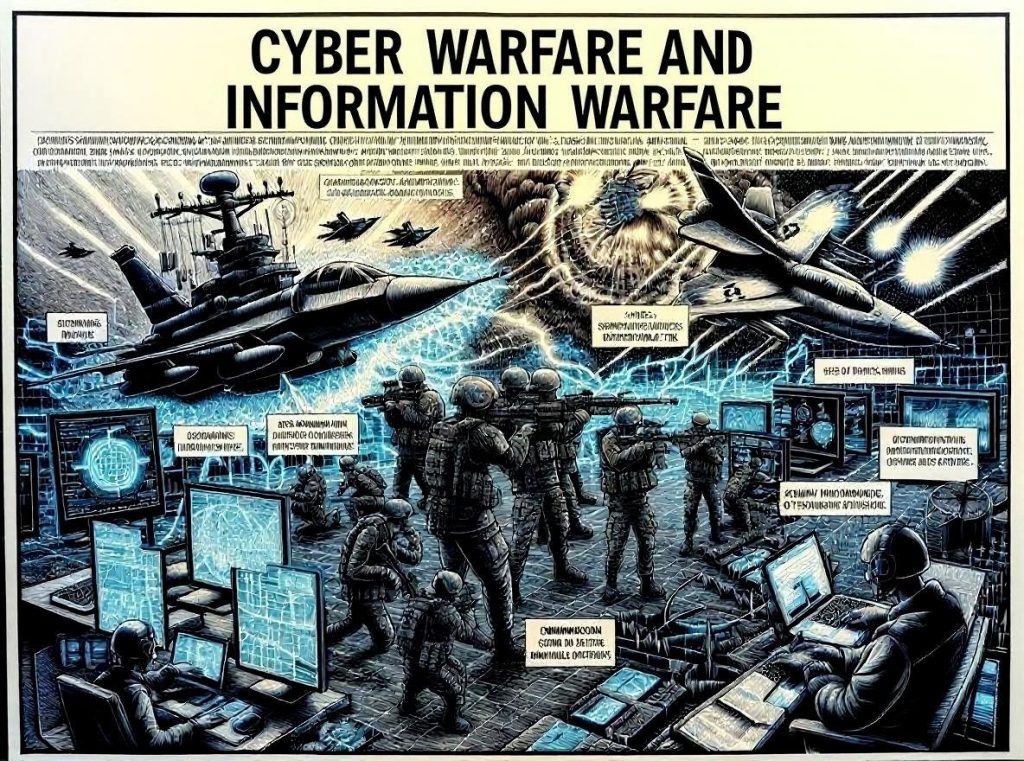
Fifth generation warfare challenges traditional military doctrines. It forces nations to think about national security beyond borders and battlefields. The state must invest in:
▪️Cyber resilience
▪️Digital literacy
▪️Information integrity
It is necessary to develop multi-domain strategies that include diplomacy, technology, and civil society.
In reality, conflicts will be hybrid, meaning they will include multiple capabilities and technologies. They will take place in all mutually integrated domains, and there will be no front and rear. There will only be local differences in tools and intensity of action. One asymmetry will balance another. If we don’t have artillery and tanks, expect that’s where our adversary will surprise us. If we don’t digitally deter and are not cyber resilient, the adversary will defeat us without firing a shot.
The biggest mistake we could make in the feverish effort to increase defense spending would be to focus only on quickly available weapon systems and filling long-term holes in the system that arose during budget droughts. Preparing for the past war is a waste of effort and resources. We must prepare for a future war whose contours we are only beginning to sense.
The only chance to succeed and purposefully invest in our defense and security is to build versatile armed forces and a resilient society that will be sufficiently flexible, adaptive, and agile. Such that they can quickly adapt and respond to changing threats and conditions. Armed forces must have iron and reason, society must have prudence and cohesion.
Read also:
1) Ukrainian War for Existence – Pavel Macko – Bezpečnosť, Technológie, Stratégie
NASPAŤ
